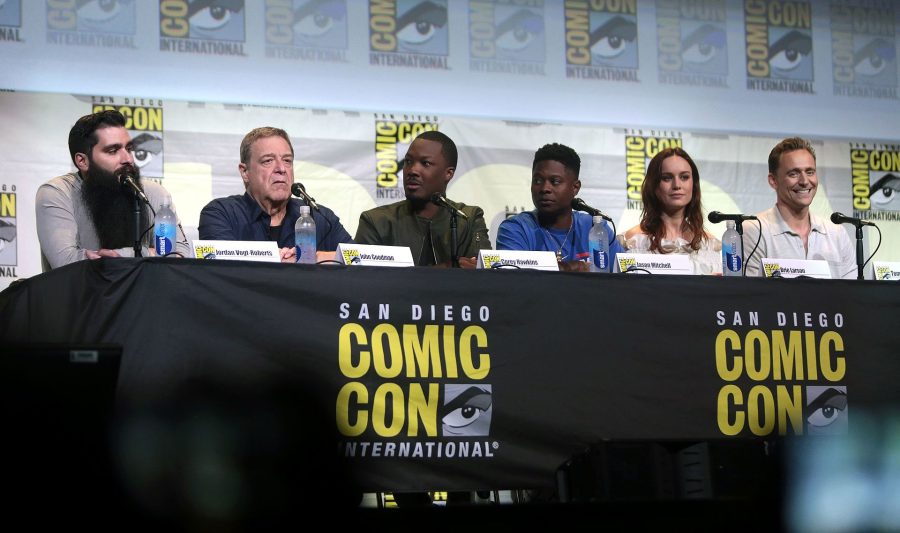For fans of classic Japanese Kaiju films, “Godzilla” (2014) represented a film with tremendous possibility for American adaptations of classic monsters. After the farce put forth in 1998, just about everyone was skeptical. However, once we they saw the design for Godzilla, pretty much everyone was on board. “Godzilla” lived up to the hype and delivered a fun Kaiju film.
When the big guy was on screen, he didn’t disappoint. But therein was the problem… he lacked screen time. “Godzilla” was muddled down with pointless and uninspiring character development and not enough Godzilla. Solid film, but it was just a start.
Fast forward to 2017, with the release of “Kong: Skull Island.” Legendary Pictures heard the complaints of their audience and corrected the errors.
Kong was excellent for its simplicity. It knew what the fans wanted, and it gave it to them. The characters weren’t given too much development because they didn’t need it. The star of this movie needed to be Kong, and they succeeded in doing that. “Skull Island” was packed with quality actors like Tom Hiddleston, Samuel L. Jackson, Brie Larson, and John Goodman; however, the plot kept the focus on Kong. There are nice breaks from the gorilla’s mythos via mini character side plots, but they don’t drive the film. The plot simply focuses on the classic story of humans stumbling upon a hidden island, going to check it out, and discovering a land that time forgot ruled by a giant gorilla.
Where the movie really succeeds is in Legendary’s effort to build up their new monster universe. “Godzilla” and “Kong: Skull Island” share the concept of the organization Monarch, which was introduced in the 2014 Godzilla film as an organization founded to find, monitor, and study any massive, unidentified, terrestrial organisms like Godzilla and Kong.
Kong gives us the origins of Monarch as an organization, before they had been successful in their efforts to locate any monsters. At this point, Monarch was an organization that the government felt was useless and downright crazy. “Kong: Skull Island” shows us how Monarch’s studies on monsters became viewed as important, as their claims about creatures started to gain evidence.
The post-credits scene really ties the films together in a fantastic way. I obviously won’t go into detail about it, so as not to spoil anything, but I will say that it really gives a sense of how big this monster universe is becoming, and the ancient/prehistoric feel they want the creatures to have.
Overall, “Kong: Skull Island” did a better job of displaying its monster than the 2014 Godzilla film did. I personally loved “Godzilla,” but I do recognize and understand that it gave us too much plot about characters that nobody cared about, and not enough action involving everyone’s favorite Atomic Age Abomination/Prehistoric Force of Nature.
“Kong: Skull Island” took the best aspects of “Godzilla” and removed the unnecessary human element, instead driving the plot around Kong. This obviously doesn’t result in the smartest plot, but it makes for a tight plot for a fun film that the fans of these monsters actually can get into. Go see “Kong: Skull Island” everyone, because this movie is just a complete blast from beginning to end!
‘Kong: Skull Island’ A Monster Success
March 24, 2017
From left to right: Jordan Vogt-Roberts, John Goodman, Corey Hawkins, Jason Mitchell, Brie Larson, and Tom Hiddleston at the 2016 San Diego Comic Con to promote the film.





















































